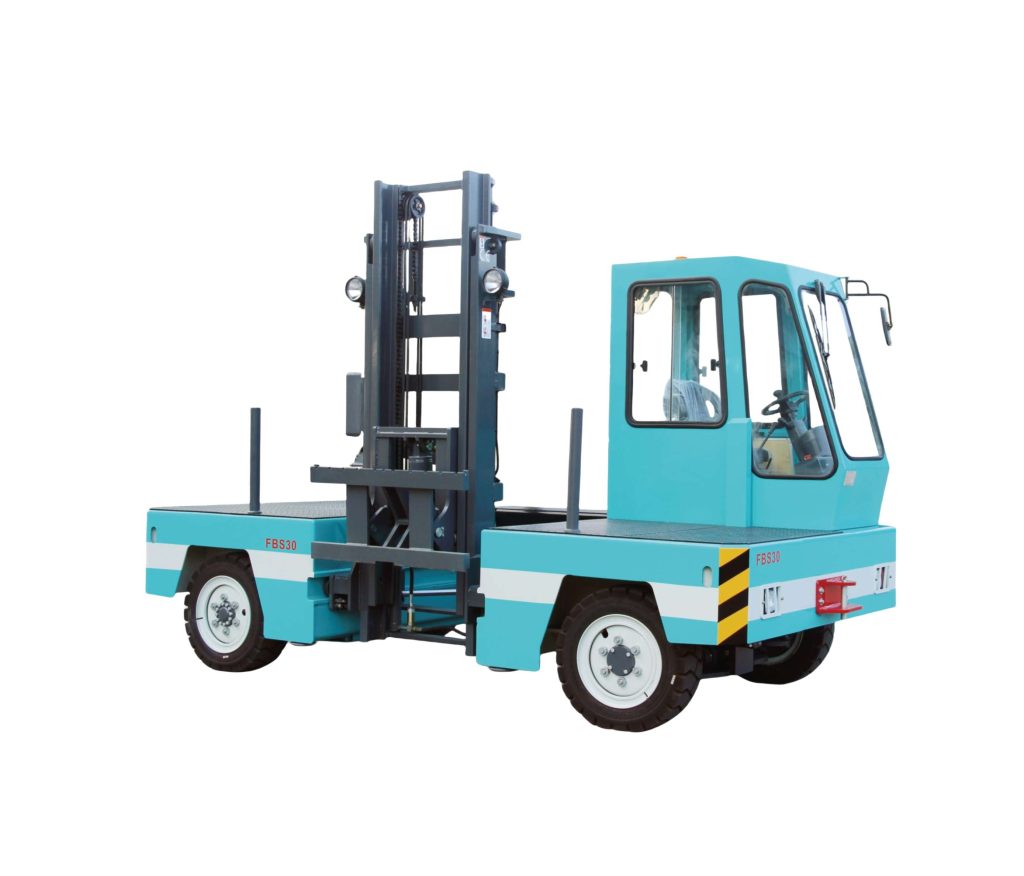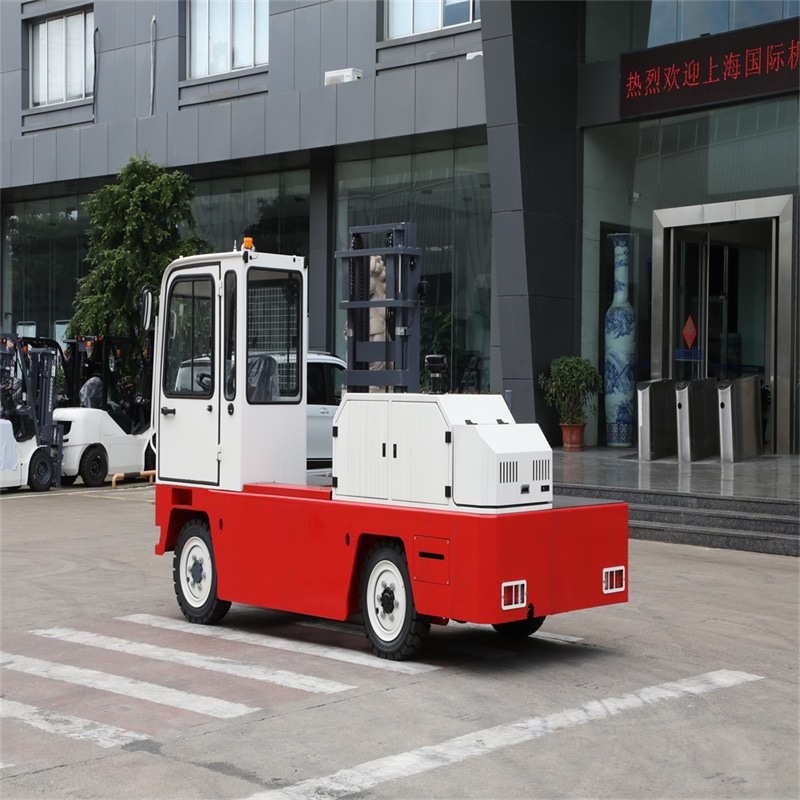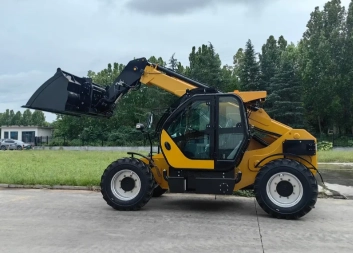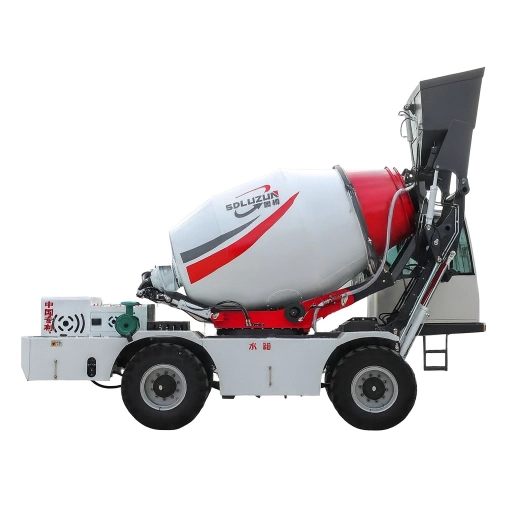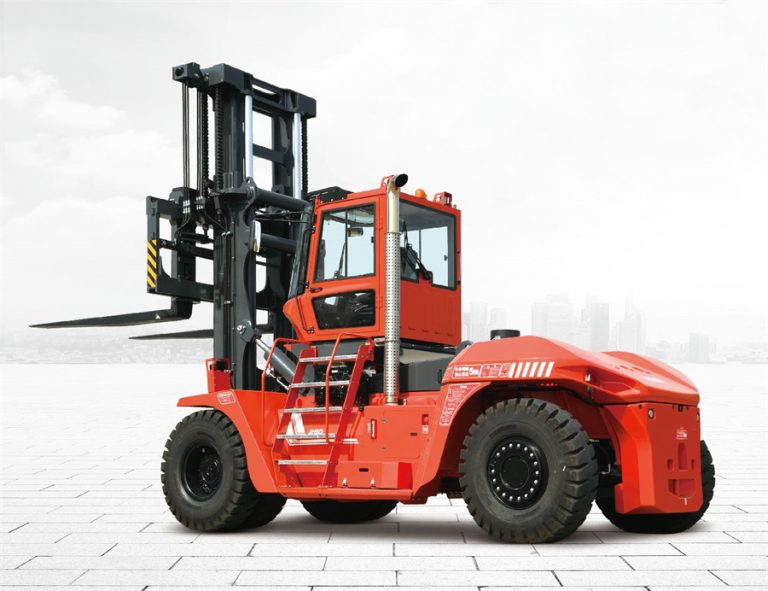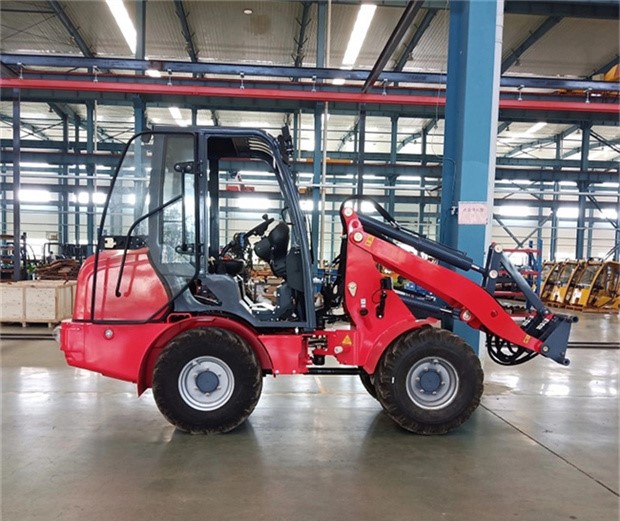Picture this: You’re knee-deep in a warehouse expansion, racks stacked like a game of Tetris gone wrong, and every inch counts. Narrow aisles aren’t just a buzzword—they’re the reality for most modern storage ops, where space is premium and downtime hits the wallet hard. If you’re juggling long pallets of lumber or towering boxes of parts, picking the right lift can make or break your flow. That’s where the side loader vs. reach truck debate heats up. Both tackle tight spots, but one’s a side-entry wizard for awkward loads, while the other reaches for the stars in vertical storage. Let’s cut through the specs and get real about which fits your setup.
Navigating the Squeeze: Why Narrow Aisle Gear Matters
Warehouses today? They’re shrinking. Or at least feeling that way with e-commerce booming and inventory piling up. Data from the Material Handling Institute shows that over 70% of new facilities are going for aisle widths under 10 feet to cram in more slots. It’s smart—until your standard counterbalance forklift starts clipping corners and your crew’s sweating bullets on every turn.
Enter specialized narrow aisle machines. They don’t just fit; they thrive in those pinch points. But here’s the rub: Not every tool’s cut out for the same job. A side loader shines when you’re hauling lengthy stuff like steel pipes or timber beams without wrestling the turn radius. A reach truck? It’s your go-to for stacking pallets sky-high in a rack system that’s more vertical than horizontal. Picking wrong means bottlenecks, bumped inventory, and maybe a bruised ego from that one close call you could’ve avoided.
I once chatted with a logistics guy in Ohio who swapped his old fleet for the wrong narrow aisle pick—ended up with more repalletizing than he bargained for. Lesson learned: Match the machine to the mess you’re in.
Getting Sideways with the Side Loader Forklift
Side loaders aren’t your grandpa’s straight-ahead lifter. These bad boys load from the side, forks swinging out parallel to the chassis like they’re ready for a quick draw. It’s a game-changer for ops where length trumps height.
Core Features That Keep It Rolling
Think compact frame with a low center of gravity—keeps things stable even when you’re maxed out. Most models pack electric or diesel power; electrics hum quietly indoors, while diesels grunt through heavier outdoor hauls. Load capacities? They range from 3 tons for lighter gigs up to 10 tons for the beasts that laugh at bulk steel.
Maneuverability’s the star here. Four-wheel steering lets you pivot on a dime, and that side-entry means no awkward 180s to grab a load. Operators get a clear line of sight down the forks, cutting down on those “where’d that pallet go?” moments. And batteries or fuel efficiency? Solid, with run times stretching 8-10 hours on a charge, depending on the hustle.
Where It Fits Like a Glove
Steel yards, lumber mills, pipe distributors—these spots scream side loader. Imagine a fabrication shop in Texas, aisles barely 8 feet wide, cramming 20-foot rebar without a hitch. One foreman I heard from said it slashed their handling time by 25%, just by ditching the front-load dance. It’s not flashy, but it gets the job done without the drama.
Of course, it’s not all smooth sails. If your loads are short and stackable, you might feel like you’re overkill. But for those marathon-length hauls? Pure gold.
Reaching New Heights: The Reach Truck Breakdown
Now flip the script. Reach trucks extend those forks out front like an arm stretch, pulling back under the mast for balance. No counterweight dragging behind—just pure, lean design for indoor racking marathons.
What Makes It Tick
Electric-powered almost always, with pantograph masts that telescope up to 40 feet or more. Capacities hover around 3-5 tons, plenty for boxed goods or skids. The outriggers—those stabilizing legs—keep it from tipping during lifts, but they do widen the footprint a tad.
Controls are operator-friendly: Joysticks for smooth inching, ergonomic seats to fend off backaches on double shifts. Speed tops out around 7 mph loaded, which feels zippy in a straight shot but demands finesse in curves.
Prime Time Spots for Deployment
High-bay warehouses, distribution centers with selective racking—reach trucks own these. Take a Midwest parts depot I read about; they layered inventory three levels deep in 9-foot aisles, boosting density by 30% without adding square footage. It’s vertical velocity, plain and simple.
That said, long loads? Not so much. Try threading a 12-foot beam through those outriggers, and you’ll be cursing the geometry. It’s built for precision stacking, not side quests with oversized cargo.
Side Loader vs. Reach Truck: The Showdown
Alright, gloves off. How do they stack up head-to-head? Let’s lay it out clean—no fluff.
| Aspect | Side Loader Forklift | Reach Truck |
| Load Handling | Side-entry for long, bulky items (pipes, timber up to 20+ ft) | Front-extension for standard pallets; max ~8 ft wide |
| Aisle Width | Thrives in 8-10 ft; minimal turning radius | 8-12 ft needed; outriggers add width |
| Lift Height | Up to 20-25 ft, but focus on length | 20-40+ ft for high-rack supremacy |
| Power & Environment | Electric/diesel; indoor/outdoor flexibility | Mostly electric; indoor-only vibe |
| Capacity Range | 3-10 tons, heavy on length | 3-5 tons, geared for height |
| Operator View | Excellent side sightlines | Good forward, but blind spots on returns |
| Cost Ballpark | $40K-$80K new, depending on tonnage | $30K-$60K; easier entry price |
Numbers pulled from industry averages—your mileage varies with custom tweaks. Side loaders edge out on versatility for oddball loads, while reach trucks dominate density plays.
Bulleting the big diffs:
- Maneuverability: Side loaders crab-walk sideways; reach trucks need a runway for that reach-back.
- Load Types: If it’s longer than it is tall, side it up. Short and stacky? Reach away.
- Throughput: In a mock trial run at a logistics expo, side loaders clocked 15% faster picks for linear storage.
It’s not black-and-white. One’s your utility knife; the other’s a scalpel.
Picking Your Poison: Key Factors for Narrow Aisle Success
So, how do you decide without a crystal ball? Start with your warehouse’s pulse.
- Layout Lowdown: Measure those aisles cold. Under 9 feet with long goods? Side loader’s your buddy. High ceilings calling? Reach truck climbs better.
- Load Lowdown: What’s the average haul? A beverage distributor might love reach trucks for uniform cases—quick stack, done. But a metal fab shop with 15-foot bars? Side loader, hands down. Real talk: Factor in variety. Mixed ops often run both.
- Crew Factor: New hires or vets? Reach trucks have a steeper learning curve with that extension feel. Side loaders feel more intuitive, like driving a truck with a sidecar. Training costs drop 20% on the simpler side, per some handler surveys.
- Budget and Burn: Upfront, reach trucks win cheap. But TCO? Side loaders last longer in rougher spots, with diesel models pushing 10,000-hour lifespans.
Scenario time: Say you’re retrofitting a 50,000 sq ft space in Atlanta. Aisles at 8.5 feet, mostly palletized electronics but some rod stock for repairs. Hybrid fleet—two reach for the racks, one side for the outliers. Boom, efficiency up 18% in simulations. Tweak for your quirks, and you’re golden.
Don’t sleep on maintenance. Electrics on both sip power, but diesels need oil checks—nothing kills flow like a seized engine mid-shift.
Pros and Cons: No Sugarcoating
Every tool’s got its thorns. Here’s the unvarnished truth.
Side Loader Perks and Pitfalls
- Pros:
- Masters long loads without drama.
- Tight turns save seconds per move—adds up in high-volume runs.
- Versatile power options for mixed environments.
- Cons:
- Height limits cap it for super-tall racks.
- Bulkier profile in super-narrow spots under 7 feet.
- Pricier for entry-level tonnage.
Reach Truck Wins and Wobbles
- Pros:
- Sky-high lifts maximize cube space.
- Smoother for repetitive pallet work.
- Quieter, greener indoors.
- Cons:
- Struggles with anything overlength.
- Outriggers cramp cross-aisle traffic.
- Level floors only—no bumpy yards.
Mix in a dash of real-world grit: That Ohio warehouse? Their reach trucks gathered dust on uneven concrete until they leveled up. Funny how theory meets floor.
Wrapping It Up: Your Narrow Aisle North Star
At the end of the day, side loader vs. reach truck boils down to your warehouse’s story—what’s the hero load, and what’s the villain space? If lengths are your nemesis, side up. Chasing vertical real estate? Reach out. Either way, the right pick smooths the ride, cuts costs, and keeps your team from muttering under their breath. Test drive if you can; numbers on paper don’t beat the feel of a clean lift.
Spotlight on JinChengYu FORKLIFT: Your Side Loader Partner
When it comes to side loader forklifts that actually deliver in tight spots, JinChengYu FORKLIFT stands tall. Hailing from Qingdao, China since 2002, this crew specializes in rugged, reliable handlers exported worldwide—from South America to Southeast Asia. Their lineup hits 3-ton electrics for quiet indoor zips, 3-6 ton diesels for mid-range muscle, and 10-ton heavies for the big leagues. Built tough with side-loading smarts, ergonomic cabs, and customizable tweaks, they’re all about keeping your ops humming without the headaches. Quality checks every unit, and that global network means parts show up fast. If narrow aisles are your battlefield, JinChengYu’s got the gear to win it.
Frequently Asked Questions
What’s the main edge of a side loader over a reach truck in super-narrow setups?
Side loaders win with that side-entry design—perfect for threading long loads like pipes through 8-foot aisles without constant repositioning. Reach trucks? Great for height, but those outriggers can snag in the pinch.
Can a reach truck handle the same long-haul jobs as a side loader?
Not really. Reach trucks are champs at stacking standard pallets high, but anything over 10 feet long turns into a puzzle. Side loaders just slide it in sideways and keep rolling.
In a side loader vs. reach truck face-off, which saves more floor space long-term?
Depends on your stack style. Side loaders free up width for linear storage, letting you squeeze aisles tighter. Reach trucks pack height, so if you’ve got ceiling room, they maximize vertical real estate without widening anything.
How do power types play into side loader vs. reach truck choices for indoor ops?
Electrics rule indoors for both—quiet, no fumes. But side loaders offer diesel flex for hybrid yards, while reach trucks stick electric to dodge exhaust in racks. Go green where it counts.
Is investing in a side loader worth it if my warehouse mixes short and long loads?
Absolutely, if longs are 30% or more of the mix. One operator I know blended ’em with reach trucks and saw throughput jump 15%. It’s about balance, not all-in.

